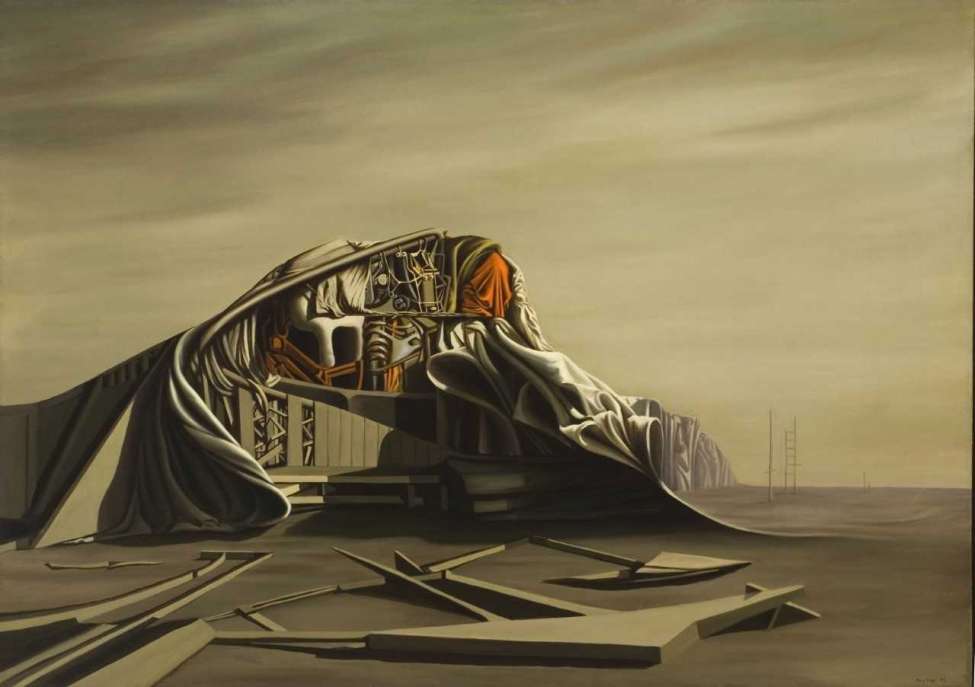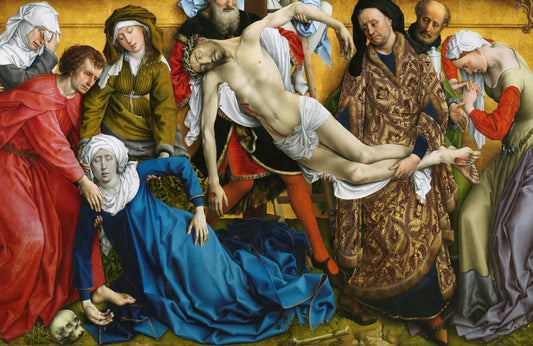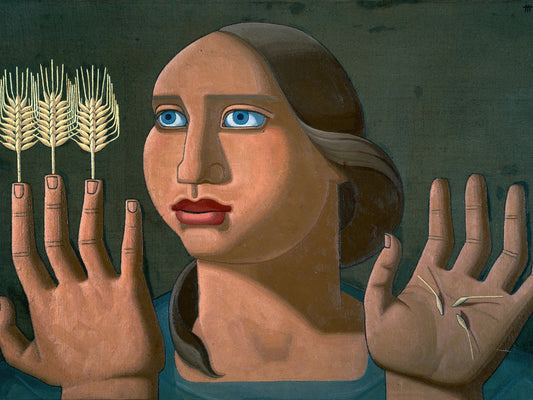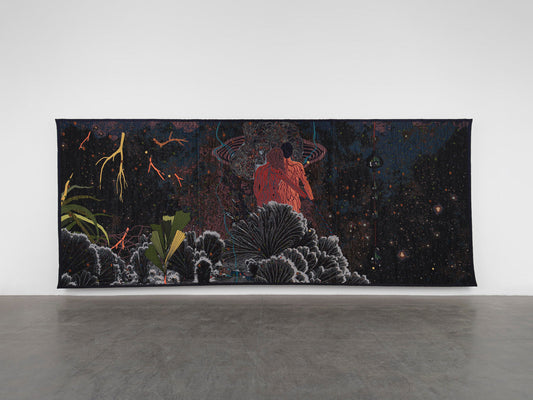Feature imager: Yves Tanguy, Deux Foois du Noir via Sotheby's
The Other Surrealists: Tanguy, Sage, and Their Circle
Surrealism developed in the early twentieth century as a visual and literary movement grounded in dreams, psychology, and the irrational. Most surveys of the genre highlight well-known figures such as Salvador Dalí, René Magritte, Max Ernst, and André Breton. These artists made significant contributions to the public understanding of Surrealism, but their prominence has often overshadowed other important voices. This article examines the careers and work of several underrecognized Surrealists, with a focus on Yves Tanguy, Kay Sage, Leonor Fini, and Ithell Colquhoun.
Yves Tanguy: Architect of Imaginary Space
Yves Tanguy was born in Paris in 1900. He did not receive formal academic training in painting, but his intuitive approach and unique vision led him to join the Surrealist group in 1925. He discovered Surrealism after encountering a painting by Giorgio de Chirico in a gallery window. This moment shaped his commitment to translating psychological states into visual landscapes.

Tanguy developed a highly distinctive style. His paintings feature vast, barren terrains filled with ambiguous shapes and mineral forms. Works such as Indefinite Divisibility (1942) and The Furniture of Time (1939) offer meticulously rendered scenes where gravity and scale appear suspended. The atmosphere in these paintings is silent and dense, evoking a world governed by its own internal logic. Tanguy created a visual grammar of the unconscious, and his influence can be traced in postwar abstraction, science fiction illustration, and even digital art.

Kay Sage: Geometry and Isolation
Kay Sage was born in New York in 1898. She studied painting in Italy and became affiliated with the Surrealist movement in the 1930s. In 1940, she married Yves Tanguy and began producing her most significant work. Although closely associated with Tanguy, Sage established her own distinct aesthetic vocabulary. Her paintings often depict scaffold-like structures, looming architectural elements, and desolate environments marked by an atmosphere of quiet tension.

Sage employed a limited palette dominated by grays, silvers, and muted blues. Her works include Tomorrow is Never (1955) and The Instant (1949), both of which present enigmatic constructions that resist narrative interpretation. These paintings suggest mental landscapes shaped by loss, exile, and existential reflection. Following Tanguy’s sudden death in 1955, Sage’s output became increasingly austere and introspective. Her final paintings express emotional compression through stark geometry and spatial isolation.
Art historians have recently reconsidered Sage’s work through the lens of gender and trauma. Her contributions to Surrealism are now viewed as foundational to the visual language of postwar American modernism.

Leonor Fini: Myth and Sovereignty
Leonor Fini was born in Buenos Aires in 1907 and raised in Trieste, Italy. She spent most of her career in Paris, where she interacted with the Surrealist circle but remained independent from Breton’s group. Fini created a highly personal visual world that combined mythology, eroticism, and ritual. Her paintings are often populated by sphinxes, priestesses, and androgynous figures engaged in symbolic ceremonies.

Works such as La Gardienne du Silence (1953) and Endimione (1955) illustrate Fini’s interest in power, transformation, and interior life. Her compositions resist linear narrative and instead function as tableaux of psychological and emotional states. Fini also collaborated with theater designers, photographers, and writers. She styled herself as a work of art, curating her home and wardrobe with the same intensity she applied to painting.
Fini’s work has attracted renewed attention in recent decades, particularly within feminist art history. Her reinterpretation of myth and her focus on female subjectivity distinguish her from many of her Surrealist contemporaries.

Ithell Colquhoun: Surrealism and the Occult
Ithell Colquhoun was born in India in 1906 and educated at the Slade School of Fine Art in London. She became associated with the British Surrealist movement in the 1930s. Colquhoun maintained a lifelong interest in the occult, alchemy, and esoteric traditions. She applied Surrealist techniques such as automatic drawing, frottage, and decalcomania to produce visionary compositions infused with spiritual significance.

Paintings like Scylla (1938) and The Pine Family (1940) reflect her interest in natural forms, transformation, and duality. Colquhoun believed that art could serve as a form of personal revelation and that its processes were linked to ritual and meditation. She also published poetry, essays, and experimental texts that explored themes of gender, magic, and consciousness.
Although she was removed from the British Surrealist group due to her refusal to separate art from mysticism, Colquhoun’s work persisted throughout her life. Her paintings, writings, and archives have become increasingly important to scholars investigating the intersections between Surrealism and esotericism.

The Surrealist movement encompassed a wide range of styles, techniques, and intellectual commitments. While public attention has focused on a handful of prominent figures, the work of artists such as Yves Tanguy, Kay Sage, Leonor Fini, and Ithell Colquhoun offers equally profound contributions. These painters approached the unconscious with rigor and imagination. Their artworks construct environments that defy ordinary logic and invite sustained reflection.
Each of these artists used Surrealism as a method rather than a style. They explored the relationship between thought and form, language and silence, time and perception. Their paintings do not illustrate dreams. Instead, they build new structures for thinking and seeing. By revisiting their work, it becomes possible to understand Surrealism not only as a movement but as a series of individual discoveries.
©ArtRKL® LLC 2021-2025. All rights reserved. This material may not be published, broadcast, rewritten or redistributed. ArtRKL® and its underscore design indicate trademarks of ArtRKL® LLC and its subsidiaries.





